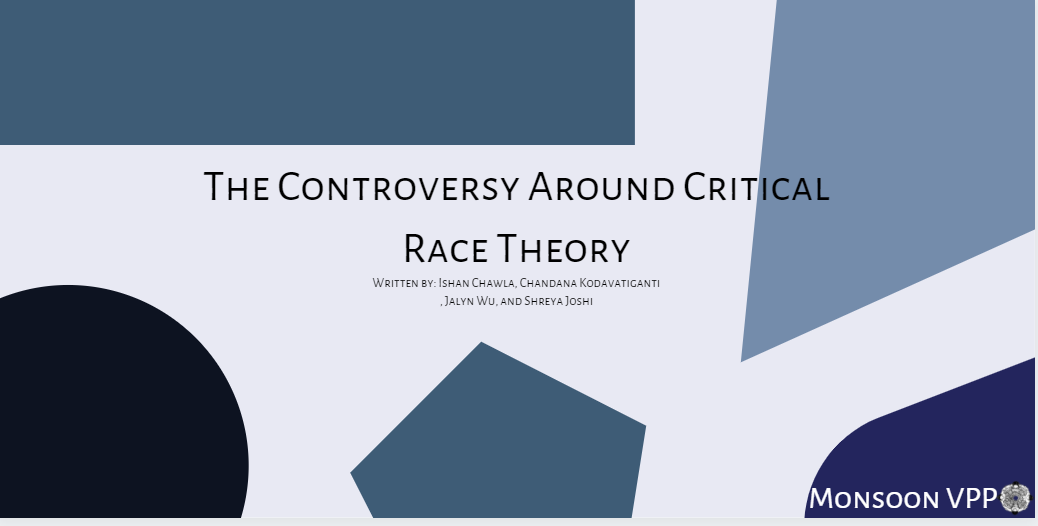 sparking political oppositionAs back to school season starts, the Monsoon VPP thought we should take a look at what won’t be taught this school year: Critical Race Theory (CRT). In June, Kim Reynolds, Iowa’s governor, banned teaching CRT in our schools. Those who voted for the ban called CRT “indoctrination”, not education. Among other things, the ban prevents the teaching of institutions, past forms of oppression, and people as being inherently racist or sexist. If you read between the lines, what this really does is deny that white privilege exists. In addition, the ban encourages people to not feel psychological distress or collective guilt. They also claim that CRT was created by one race to oppress another (i.e. the “reverse racism” phenomenon -- which is a whole other blog topic). And it’s important to note that Iowa is only 1 of 21 states where critical race theory is meeting political opposition. However, those who oppose CRT so staunchly, often misunderstand what it’s all about. Critical Race Theory was developed in the 1980s by Kimberlé Crenshaw and is a way of viewing the world. As an activist and scholar, she also coined the term intersectionality (and if you want to learn more about that, check out our other blog!). CRT states that individual bias or prejudice is not solely responsible for racism, but rather racism is intertwined into laws, schools, and infrastructure through governmental policies. For example, red-lining is responsible for unequal access to housing, education, and policing. Used in the early to mid-1900s, banks and real estate agents outlined a majority of black neighborhoods in red. It deemed these residents as “unsafe to do business with.” This means that black people could not secure loans or investments to purchase a house that could be passed down, blocking wealth retention in black families. And this is just one example. Today, racism and bias still exist because of these practices. CRT takes these phenomena into account while other viewpoints don’t, thus showing how vital of a tool it is in the classroom. Although critical race theory is banned in many schools across the United States, we still encourage everyone to educate themselves on their own time. The most important thing to emphasize here is that reading or hearing about CRT, while valuable, is not the same as practicing anti-racism. We should seek to emphasize and center the voices of black, indigenous, and other youth/people of color and apply an intersectional lens to our work. CRT teaches us to actively interrogate systems that we take for granted, be open-minded, and most importantly, think for ourselves with well-informed opinions. Furthermore, CRT is a mindset, but can and should also encompass a wide range of actions we can take, from practicing anti-racism in our own lives to advocating for legislation that benefits marginalized populations.
Finally, we should remember that learning about critical race theory is a journey, not a destination. We definitely haven’t come close to even covering all the intricacies of the work of CRT authors and activists, so we will take this opportunity to share some more resources!
0 Comments
Leave a Reply. |
Categories
All
Year ARchive
February 2023
|


